Mango, often referred to as the “king of fruits,” holds a special place in the hearts of people in Bangladesh. The country is blessed with a tropical climate that is perfect for cultivating various mango varieties, each with its unique flavor, size, shape, and aroma. The mango season in Bangladesh, typically from May to August, turns the entire country into a haven for mango lovers.
This article provides a detailed overview of the best mango varieties in Bangladesh, along with their unique characteristics, regional significance, and prices in Bangladeshi Taka (BDT).
1. Himsagar (হিমসাগর)
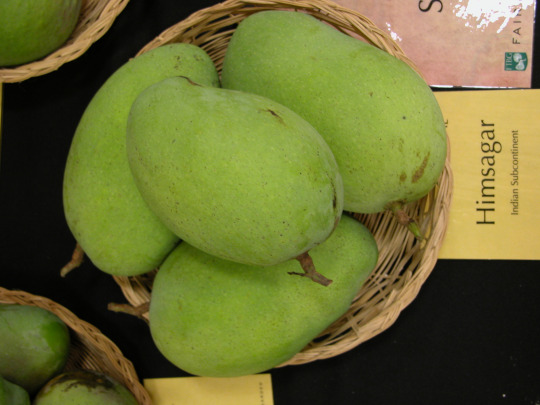
Characteristics:
Himsagar is often hailed as one of the finest mango varieties in Bangladesh due to its delicious taste, non-fibrous pulp, and rich sweetness. The fruit is medium-sized with a bright yellow skin that turns golden when fully ripe. Its flesh is juicy, smooth, and has a distinct tropical aroma.
Growing Regions:
Himsagar is predominantly grown in the districts of Chapai Nawabganj, Rajshahi, and Dinajpur. These regions are known for their fertile soil and favorable climatic conditions, which contribute to the exceptional quality of this mango variety.
Season:
The Himsagar mango is usually available from mid-May to June.
Price:
The price of Himsagar mangoes varies depending on the season and quality. On average, the cost ranges from BDT 80 to 120 per kilogram.
2. Langra (ল্যাংড়া)

Characteristics:
Langra is a popular mango variety known for its greenish skin even when ripe, which sets it apart from other varieties. It is medium to large in size, with a unique elongated shape. The flesh of Langra is soft, fiberless, and extremely sweet, making it a favorite among mango enthusiasts.
Growing Regions:
Langra mangoes are mainly cultivated in the Rajshahi and Chapai Nawabganj regions. The distinct flavor of Langra is attributed to the specific soil and climate conditions in these areas.
Season:
Langra mangoes are typically available from June to July.
Price:
The price of Langra mangoes in the market ranges from BDT 90 to 130 per kilogram, depending on the season and supply.
3. Fazli (ফজলি)
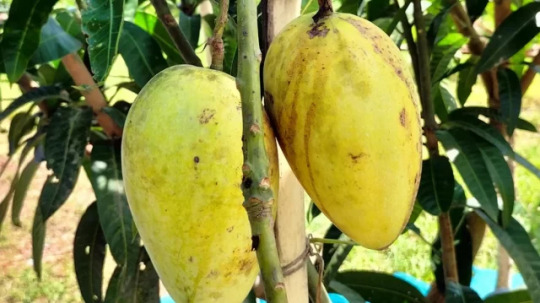
Characteristics:
Fazli mango is one of the largest mango varieties grown in Bangladesh, often weighing up to a kilogram or more. It has a greenish-yellow skin with a slightly acidic yet sweet flavor. The flesh is soft and fibrous, making it ideal for making pickles, jams, and other preserves.
Growing Regions:
This variety is predominantly cultivated in the Rajshahi and Chapai Nawabganj districts, where it is celebrated for its late-season availability.
Season:
Fazli mangoes are usually available from July to August, extending the mango season in Bangladesh.
Price:
The average price of Fazli mangoes ranges from BDT 70 to 100 per kilogram.
4. Amrapali (আম্রপালি)
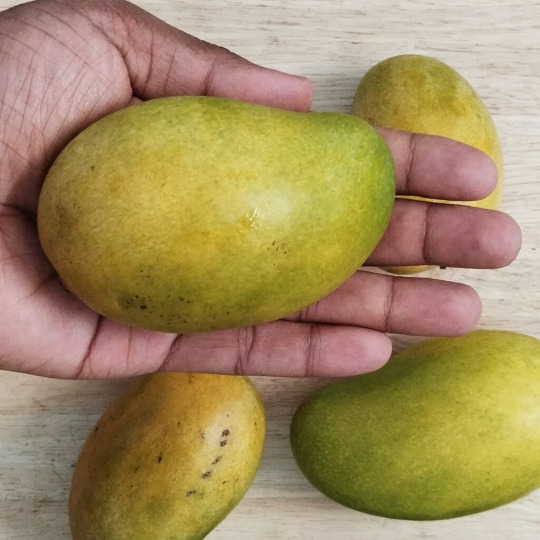
Characteristics:
Amrapali is a hybrid variety created by crossing Neelum and Dasheri mangoes. It is small to medium in size with a reddish-yellow skin. Amrapali is known for its high pulp content, rich sweetness, and slightly tangy flavor, which makes it a popular choice for making mango juice and pulp.
Growing Regions:
This variety is grown in different regions, including Dhaka, Jessore, and Barishal. The adaptability of Amrapali to different soils and climates has made it a popular choice for mango cultivation across the country.
Season:
Amrapali mangoes are typically available from June to July.
Price:
The price of Amrapali mangoes ranges from BDT 60 to 90 per kilogram.
5. Khirsapat (খিরসাপাত) or Khirshapati

Characteristics:
Also known as Khirshapati, this variety is often referred to as the “queen of mangoes” in Bangladesh. It is medium-sized with a yellowish-green skin. The flesh is sweet, smooth, and non-fibrous, with a delicate flavor that makes it a premium variety.
Growing Regions:
Khirsapat is predominantly grown in Chapai Nawabganj, where the unique soil and climatic conditions enhance its flavor and quality.
Season:
Khirsapat mangoes are available from May to June.
Price:
The average market price of Khirsapat mangoes ranges from BDT 100 to 150 per kilogram.
6. Gopalbhog (গোপালভোগ)
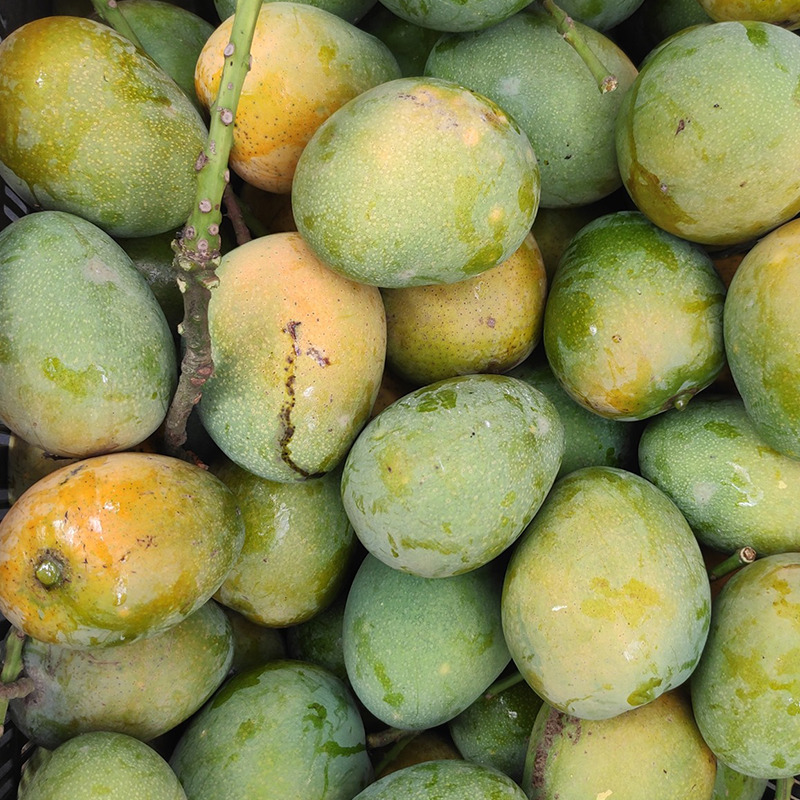
Characteristics:
Gopalbhog is an early-season mango variety that is small to medium in size with a greenish-yellow skin. The fruit is known for its sweet, non-fibrous pulp and unique flavor. It is one of the earliest varieties to hit the market, making it highly anticipated by mango lovers.
Growing Regions:
Gopalbhog mangoes are primarily cultivated in the Rajshahi and Chapai Nawabganj districts.
Season:
This variety is available from mid-May to early June.
Price:
The price of Gopalbhog mangoes typically ranges from BDT 70 to 110 per kilogram.
7. Lakhna (লখনা) or Lachna
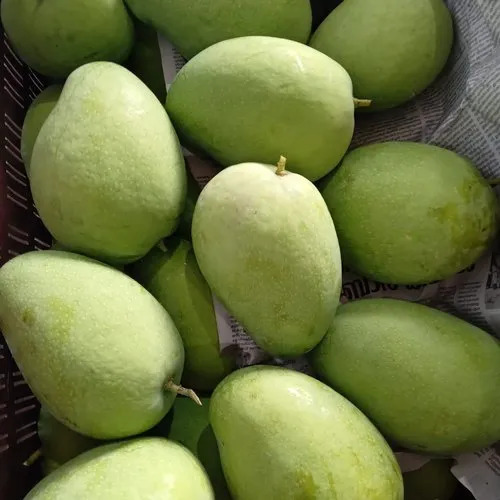
Characteristics:
Lakhna, also known as Lachna, is a relatively lesser-known variety but is highly regarded for its sweet taste and juicy pulp. It has a greenish-yellow skin with a slight blush of red when ripe. The flesh is soft, with minimal fiber, making it a delightful choice for fresh consumption.
Growing Regions:
Lakhna mangoes are mainly grown in the regions of Satkhira and Kushtia.
Season:
Lakhna is available from June to July.
Price:
The market price for Lakhna mangoes ranges from BDT 80 to 120 per kilogram.
8. Guti (গুটি)
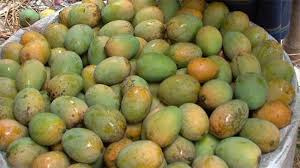
Characteristics:
Guti mangoes are known for their small size and distinctive taste. Although they are not as popular as other varieties, they have a unique flavor that some people prefer. The skin is green with a slightly yellowish tinge when ripe, and the flesh is soft with a moderate level of sweetness.
Growing Regions:
Guti mangoes are grown in different regions across Bangladesh, including Khulna, Jessore, and Barishal.
Season:
This variety is available from June to July.
Price:
Guti mangoes are usually priced between BDT 50 to 80 per kilogram.
9. Aswina (আসিনা)
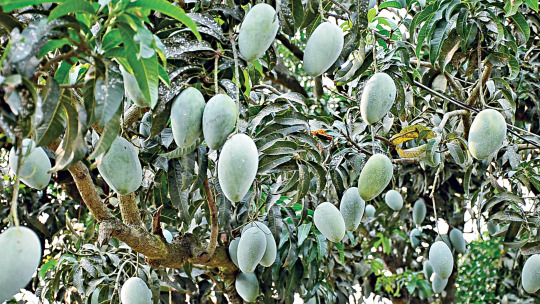
Characteristics:
Aswina mangoes are large in size, with a distinctive oval shape and a yellowish-red skin. The flesh is firm, slightly fibrous, and has a sweet, aromatic taste. Aswina is popular for both fresh consumption and for use in desserts and beverages.
Growing Regions:
Aswina mangoes are primarily cultivated in the regions of Jessore, Satkhira, and Khulna.
Season:
This variety is available from July to August.
Price:
The price of Aswina mangoes ranges from BDT 60 to 100 per kilogram.
10. Baganapalli (বাগানপল্লী) or Safeda
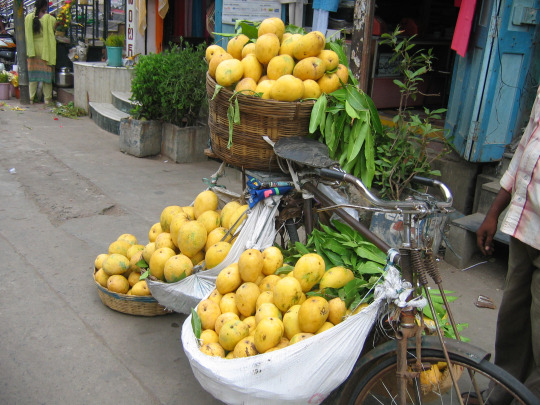
Characteristics:
Baganapalli, also known as Safeda, is a medium to large-sized mango with a golden-yellow skin and a sweet, slightly tangy flavor. The flesh is firm and fiberless, making it ideal for making mango slices and juice.
Growing Regions:
Baganapalli mangoes are grown in various regions, including Dhaka, Khulna, and Chattogram.
Season:
This variety is typically available from June to July.
Price:
The market price of Baganapalli mangoes ranges from BDT 70 to 100 per kilogram.
11. Lata Bombai (লতা বোম্বাই)
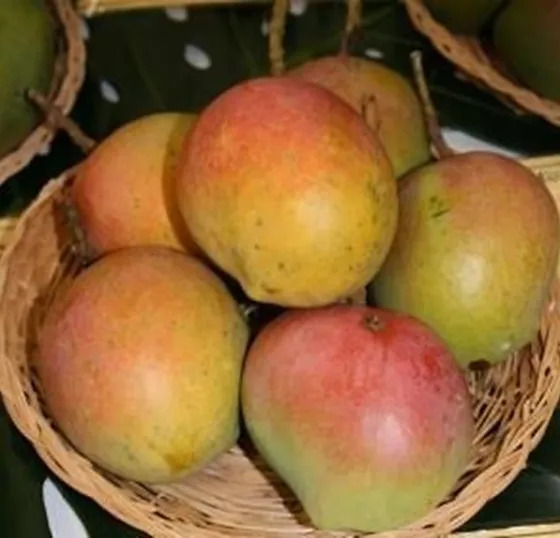
Characteristics:
Lata Bombai is a small-sized mango variety with a distinct sweet and tangy taste. The skin is green with a reddish blush, and the flesh is juicy and fiberless.
Growing Regions:
Lata Bombai mangoes are primarily cultivated in the districts of Mymensingh and Tangail.
Season:
This variety is available from June to July.
Price:
Lata Bombai mangoes are generally priced between BDT 60 to 90 per kilogram.
12. Chausa (চৌষা)
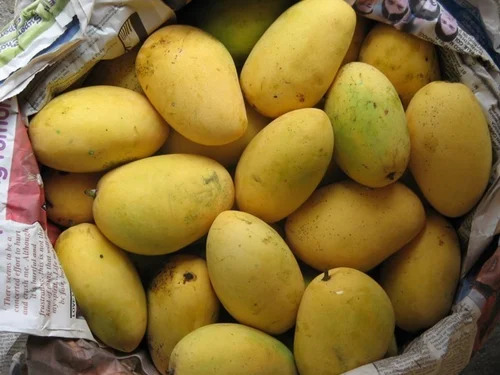
Characteristics:
Chausa mangoes are medium-sized with a yellowish-green skin. They are known for their rich, aromatic flavor, which is a perfect blend of sweetness and slight acidity. The flesh is juicy and relatively fiberless.
Growing Regions:
Chausa mangoes are mainly cultivated in the regions of Rajshahi and Chapai Nawabganj.
Season:
Chausa mangoes are available from July to August.
Price:
The price of Chausa mangoes ranges from BDT 80 to 120 per kilogram.
Factors Influencing Mango Prices in Bangladesh
The price of mangoes in Bangladesh can vary depending on several factors:
Variety: Premium mango varieties like Himsagar, Khirsapat, and Langra generally command higher prices due to their superior taste, texture, and demand, while lesser-known or smaller varieties like Guti or Lata Bombai are often more affordable.
Seasonal Availability: Prices tend to be lower during peak mango season (May to August) and higher at the beginning and end of the season.
- Quality and Size: Larger and well-formed mangoes without blemishes or spots usually fetch higher prices in the market. The quality of the mango, including its ripeness and freshness, also affects its price.
- Regional Availability: Mangoes grown in regions like Rajshahi and Chapai Nawabganj, known for their superior quality, may be priced higher than those from other areas.
- Supply Chain and Transportation Costs: The cost of transporting mangoes from the orchard to the market or distribution center can affect their final price. In areas farther from mango-growing regions, prices may be slightly higher due to added transportation costs.
- Market Demand: Prices fluctuate based on consumer demand. During festivals or holidays, the demand for mangoes increases, leading to higher prices.
The Cultural Significance of Mangoes in Bangladesh
Mangoes are deeply ingrained in the culture and traditions of Bangladesh. The fruit is not only a summer delicacy but also a symbol of joy, hospitality, and celebration. Throughout the mango season, various regions host mango festivals, where farmers, traders, and consumers gather to celebrate this much-loved fruit.
Mangoes also play a significant role in Bangladeshi cuisine. From traditional desserts like mango chutney, aam doi (mango yogurt), and mango lassi to modern dishes like mango salsa and smoothies, the versatility of mangoes makes them a staple in kitchens across the country.
Health Benefits of Mangoes
Mangoes are not only delicious but also packed with nutrients. Here are some of the key health benefits:
- Rich in Vitamins: Mangoes are an excellent source of vitamins A and C, which are vital for maintaining good vision, boosting the immune system, and promoting healthy skin.
- High in Fiber: The fiber content in mangoes aids in digestion and helps prevent constipation.
- Antioxidant Properties: Mangoes contain antioxidants like quercetin, astragalin, and gallic acid, which help neutralize free radicals and protect the body against various diseases, including certain types of cancer.
- Supports Heart Health: The potassium and magnesium found in mangoes help maintain a healthy heart by regulating blood pressure and reducing the risk of cardiovascular diseases.
- Improves Skin and Hair Health: The vitamin C in mangoes is essential for collagen production, which helps maintain healthy skin and hair.
Tips for Buying and Storing Mangoes
To enjoy the best quality mangoes, consider the following tips:
1. Choosing the Right Mango
- Look for mangoes that are plump and firm, with a slight give when gently squeezed.
- Avoid mangoes with dark spots, wrinkles, or signs of mold.
- Smell the stem end of the mango; it should have a sweet, fragrant aroma.
2. Storing Mangoes
- Unripe mangoes can be stored at room temperature until they ripen. To speed up the ripening process, place them in a paper bag.
- Once ripe, mangoes can be stored in the refrigerator for up to five days.
- Mangoes can also be sliced and frozen for longer storage, making them available year-round for smoothies, desserts, or sauces.
Mango Export Market in Bangladesh
Bangladesh is becoming an increasingly significant player in the global mango market. The country’s diverse range of mango varieties, particularly those like Himsagar, Langra, and Khirsapat, is gaining popularity in international markets. Major export destinations for Bangladeshi mangoes include the United Kingdom, the Middle East, Europe, and the United States.
To enhance the export potential, the government of Bangladesh, along with various agricultural bodies, is implementing measures to improve mango cultivation, quality control, and packaging standards. Investments in better storage facilities, transportation, and marketing strategies are helping Bangladeshi mangoes reach a wider audience globally.
Challenges in the Mango Industry
Despite the opportunities, the mango industry in Bangladesh faces several challenges:
- Pest and Disease Management: Mango orchards are often affected by pests and diseases such as fruit flies, powdery mildew, and anthracnose, which can reduce yield and quality.
- Post-Harvest Losses: Lack of proper storage and handling facilities leads to significant post-harvest losses. Improving cold storage and transport infrastructure is critical to minimize these losses.
- Climate Change: Changes in weather patterns, including unseasonal rains and temperature fluctuations, can adversely affect mango production.
- Market Access: While the demand for Bangladeshi mangoes is high, gaining access to new international markets can be challenging due to stringent import regulations and quality standards.
Future Prospects of Mango Cultivation in Bangladesh
The future of mango cultivation in Bangladesh looks promising. With increasing demand both locally and internationally, there is significant potential for growth in this sector. Key areas of focus for the future include:
- Adopting Modern Agricultural Practices: Implementing advanced farming techniques, such as drip irrigation, integrated pest management, and organic farming practices, can help improve yield and quality.
- Developing New Varieties: Research and development to create new mango varieties that are more resistant to pests and diseases, and that have longer shelf lives, can further strengthen the industry.
- Enhancing Export Potential: Continued efforts to comply with international quality standards and improve packaging, branding, and marketing strategies will help Bangladeshi mangoes capture a larger share of the global market.
Conclusion
Mangoes are more than just a fruit in Bangladesh; they are a cultural symbol and an integral part of the country’s agricultural landscape. With a wide variety of flavors, textures, and uses, mangoes offer something for everyone. From the sweet and succulent Himsagar to the aromatic and tangy Langra, each variety brings its own unique taste experience.
As Bangladesh continues to enhance its mango cultivation practices and expand its presence in the global market, the future looks bright for this beloved fruit. Whether you are a local enjoying the seasonal harvest or an international buyer looking for the best quality mangoes, Bangladesh has something special to offer.
